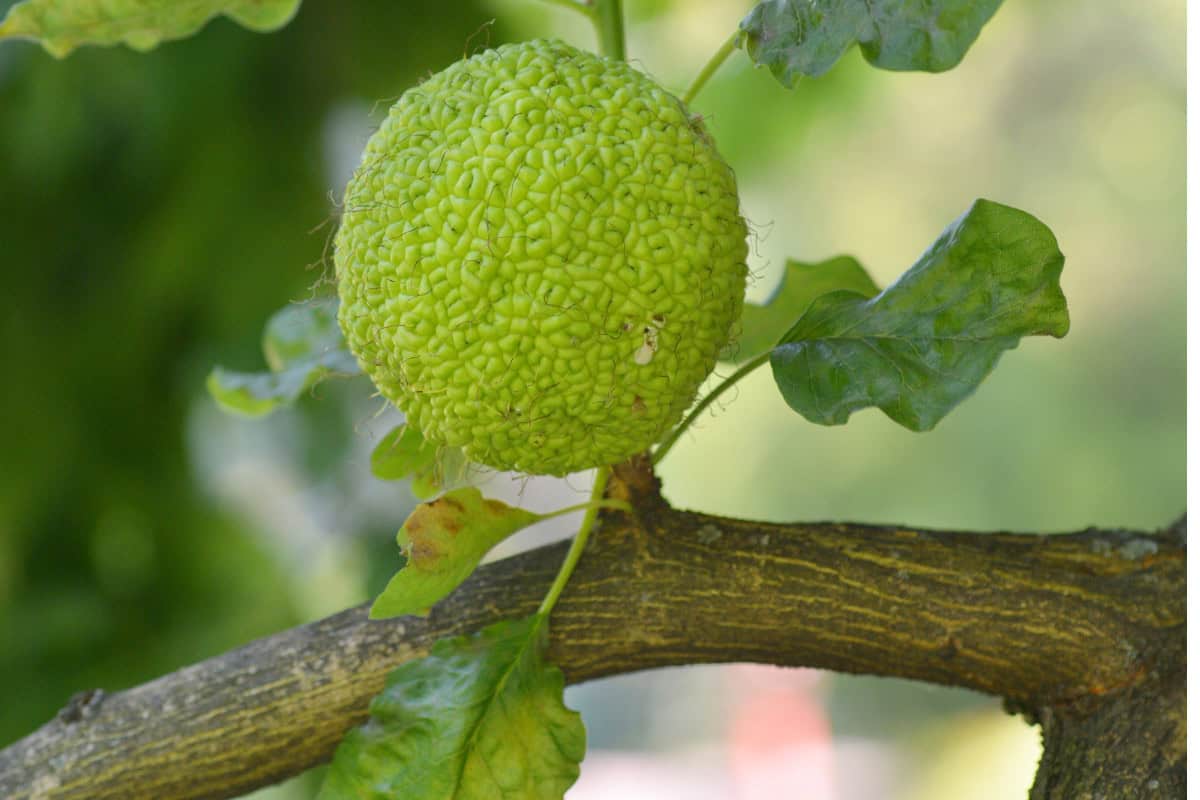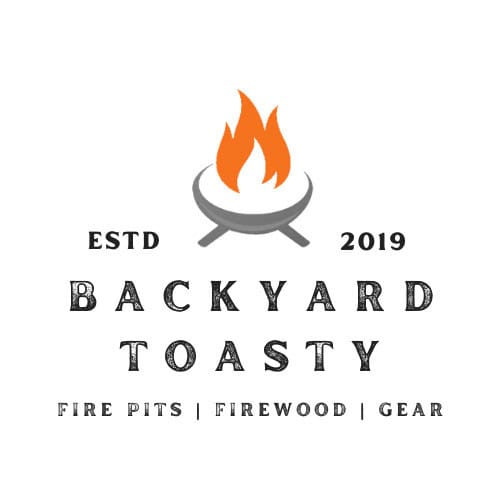
This comprehensive Osage Orange firewood profile examines the ultimate heat champion, delivering an impressive 32,800 BTUs per cord – the highest rating of any common firewood.
While Osage Orange offers unmatched heating power for serious fire pit enthusiasts, its intense sparking behavior requires careful consideration for safe outdoor use.
Quick Reference Stats
- Wood Type: Hardwood
- BTU Rating: 32,800 BTUs per cord
- Ease of Splitting: Very Difficult (1/5 scale)
- Seasoning Time: 18-24 months
- Smoke Production: Very Low
- Spark/Pop Factor: Very High
- Scent Profile: Pleasant – Mild, sweet aroma with subtle citrus notes
Overview & Identification
Osage Orange stands as the undisputed BTU king among firewood species. This incredibly dense wood delivers more heat per cord than any other common firewood.
However, its notorious sparking behavior makes it better suited for enclosed fire systems rather than open fire pits.
Common Names: Osage Orange, Hedge Apple, Horse Apple, Bodark, Hedge, Bow Wood
Scientific Name: Maclura pomifera
Tree Characteristics: Medium-sized tree reaching 25-50 feet tall. Features deeply furrowed orange-brown bark, thorny branches, and distinctive large green “hedge apples” (inedible fruit). Wood has bright yellow-orange heartwood.
Geographic Distribution
Where You’ll Find It: Native to south-central United States (Texas, Oklahoma, Arkansas). Now found throughout much of the central and eastern U.S. due to widespread planting for windbreaks.
Availability: Regional availability varies significantly – common in native range, scarce elsewhere
Growing Conditions: Extremely hardy, drought-tolerant tree that thrives in poor soils. Often planted historically for living fences and windbreaks.
Burning Characteristics
Heat Output & Performance
- BTU Content: Absolute champion at 32,800 BTUs – roughly 15% higher than oak
- Burn Duration: Burns extremely slowly with exceptional heat retention
- Coaling Properties: Creates dense, long-lasting coals that hold heat for hours
- Flame Characteristics: Intense, hot flames with bright yellow-orange color
Ignition & Fire Management
- Ease of Lighting: Very challenging to ignite due to extreme density
- Best Fire Stage: Excellent primary fuel for maximum heat applications
- Burn Rate: Exceptionally slow consumption maximizes heating efficiency
- Heat Consistency: Remarkably steady, intense heat output throughout burn
Sensory Experience
Smoke Profile
- Smoke Volume: Minimal smoke when properly seasoned
- Smoke Color: Nearly clear with clean combustion
- Smoke Flavor: Clean, neutral – suitable for cooking applications
- Creosote Production: Very low due to efficient burning characteristics
Sound & Visual
- Crackling/Popping: Extremely active with frequent, loud pops
- Sparking Tendency: Very high – throws sparks aggressively and frequently
- Flame Appearance: Brilliant, dancing flames with exceptional visual appeal
Aroma
- Burning Scent: Pleasant, mild sweetness with subtle citrus undertones
- Pleasant Factor: Generally well-liked, though not as distinctive as fruit woods
- Intensity: Moderate fragrance that doesn’t overwhelm
Processing & Preparation
Splitting Characteristics
- Ease of Splitting: Extremely difficult due to density and interlocked grain
- Grain Pattern: Highly twisted and interlocked – some pieces nearly unsplittable
- Tools Needed: Hydraulic splitter essential – hand splitting often impossible
- Best Splitting Conditions: Split when green if possible, becomes rock-hard when dry
Seasoning Requirements
- Drying Time: 18-24 months minimum for proper seasoning
- Moisture Content: Target 15-20% moisture content – takes patience to achieve
- Seasoning Tips: Stack with maximum air circulation – dense wood dries very slowly
- Storage Considerations: Stores exceptionally well once seasoned – lasts for years
Processing Notes
- Chainsaw Considerations: Very hard on equipment – dulls chains quickly and strains saws
- Bark Characteristics: Thick, tough bark that’s difficult to remove
- Handling: Extremely heavy – significantly more weight per cord than other species
Specialized Uses
Cooking Applications
- Cooking Suitability: Good for cooking, but sparking limits open-fire use
- Flavor Profile: Clean burning with neutral flavor – doesn’t overpower food
- Cooking Stage: Excellent for high-heat cooking and maintaining steady temperatures
- Food Safety: Clean burn makes it food-safe, but sparks pose safety concerns
Pest Control
- Insect Repelling: Traditional belief suggests mild insect-deterrent properties
- Active Compounds: Contains natural compounds that may discourage some pests
- Application Method: Normal burning may provide modest pest control benefits
Pros & Cons
Advantages
- Highest BTU rating of any common firewood species
- Burns extremely slowly with exceptional efficiency
- Creates outstanding coals for extended heating
- Very low smoke production when properly seasoned
- Pleasant, mild aroma that most people enjoy
- Stores indefinitely once properly seasoned
Disadvantages
- Dangerous sparking makes it unsuitable for open fire pits
- Extremely difficult and labor-intensive to split
- Requires longest seasoning time of common species
- Very hard on chainsaws and processing equipment
- Limited availability outside native growing regions
- Heavy weight makes handling and transport challenging
Best Practices & Tips
Fire Pit Optimization
- Ideal Fire Size: Best for enclosed systems – use extreme caution in open pits
- Mixing Recommendations: Combine with low-spark woods to reduce safety risks
- Safety Considerations: Never use alone in open fires – sparks can travel 20+ feet
- Weather Suitability: Avoid during dry, windy conditions due to fire risk
Purchasing & Storage
- What to Look For: Bright yellow-orange heartwood indicates fresh, quality wood
- Pricing Expectations: Premium pricing where available – often 50-100% above standard hardwoods
- Storage Lifespan: Virtually unlimited storage life when properly seasoned and covered
Bottom Line
Osage Orange delivers unmatched heating power but demands respect and proper safety precautions.
This wood is best reserved for experienced users with enclosed fire systems who prioritize maximum heat output over convenience and safety.
Best For: Enclosed fireplaces, wood stoves, experienced users wanting maximum heat efficiency
Skip If: You have an open fire pit, prioritize easy splitting, or live outside the native range
Related Resources: Osage Orange Firewood Profile
Last updated: 8/4/2025


